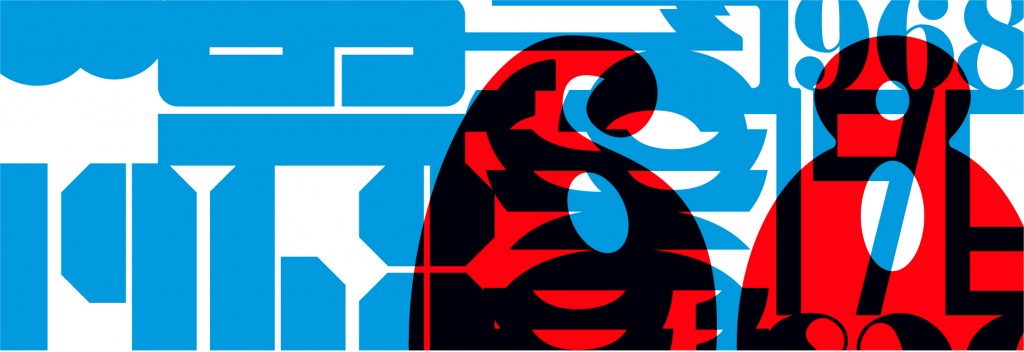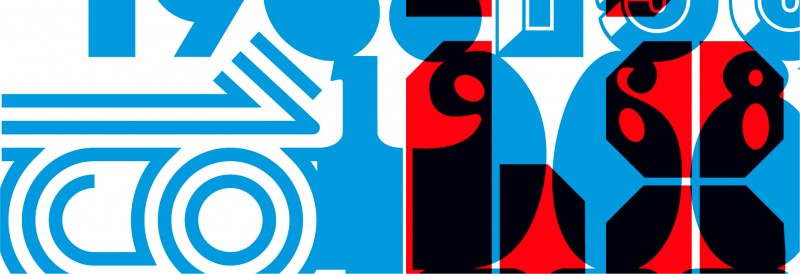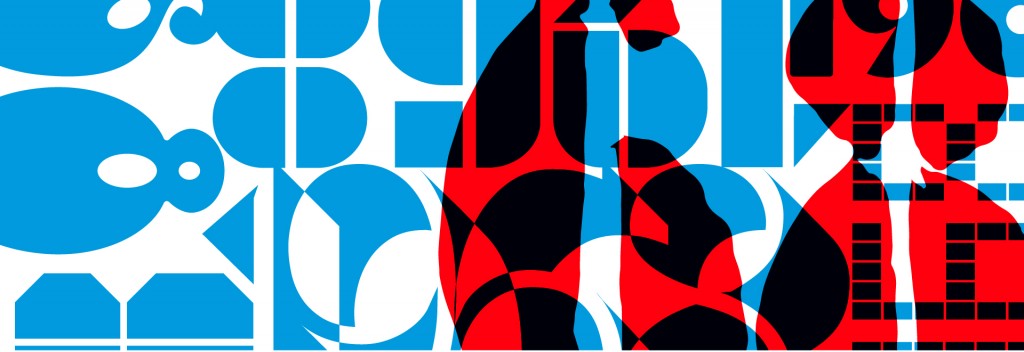The exhibiton 1968. Un anno (1968. A year) displays a great story that focuses, through a strictly synchronic approach, on a fundamental year in the history of the twentieth century: 1968 is reconstructed through a survey within the CSAC archives, whose first nucleus was born in 1968 and which today, fifty years later, boasts a collection of over 12 million original materials, in the fields of visual communication, artistic and design research in Italy, starting from the first decades of the 20th century.
Through ideas, utopias, works, projects and objects dated or correlated to the year 1968, identified within the various funds preserved at the CSAC, this exhibition aims at bringing out the transformations in the communication system, the socio-anthropological changes (New Rites, new Myths), and a new reflection on the body and the environment, which exploded that year. Different areas and languages are thus combined to deal with contaminations and the coexistence of diverse cultures.
With 1968. Un Anno– exactly fifty years after the exhibition dedicated to Concetto Pozzati, organized by the Institute of Art History of the University of Parma, which will constitute the first nucleus of works of the future Art Section of the CSAC – we do not want to suggest a single look, but a series of contradictions, comparisons and new perspectives. We intend to propose a reflection on time and on the concept of synchrony that a large archive consisting of traces of processes of conception, design and realization, is able to put into question.
The framework of the exhibition within the evocative space of the abbey church of Valserena consists of a long timeline, composed of objects, images and chronicles, flanked by a sequence of in-depth studies dedicated to the transformation of the image system and the different scales of the project of spaces and territory.
Emilio Vedova, Mario Schifano, Giosetta Fioroni, Mario Ceroli, Concetto Pozzati, Claudio Verna, Aldo Borgonzoni, Fabrizio Plessi, Rafael Canogar and William Xerra are some of the protagonists of the artistic research that in 1968 constitutes a fundamental reference point for other projects related to the image: for example the reports and photographic experiments of Uliano Lucas, Nino Migliori, Mario Cresci, Carla Cerati, Ugo Mulas, in comparison with the news recorded by the Publifoto Roma agency; or the different paths of the graphic, advertising and editorial project, which sees the creation of the new Forma font for the Nebiolo foundry in 1968 by Aldo Novarese, flanked by a team composed of Franco Grignani, Giancarlo Iliprandi, Bruno Munari, Ilio Negri, Till Neuburg, Luigi Oriani and Pino Tovaglia; or the explosion of beat and underground culture, with the project by Ettore Sottsass for the magazine “Pianeta Fresco”. The language of satire will instead be represented by authors such as Renato Calligaro and Roberto Perini.
The multiple channels of television communication are told through the projects of Armando Testa for Carosello, but also by the RAI pavilions of Achille and Pier Giacomo Castiglioni and Archizoom, or with the transformation of the radio and TV equipment produced by Brionvega.
The reflection on the body is represented on different scales: from the jewel to the dress, from the conception of new places of youth culture to the redefinition of the scene and the reappropriation of public space. The comparison of multiple systems of signs and iconography takes place through posters, clothing projects, representations of gestures and photographic reportage: from the cinematographic and theatrical imagination to the costumes from the archive of Piero Farani’s tailoring (for the films Barbarella and Il cavaliere non-existent, for the theater with Il Barone di Birbanza) at the happening fashion shows designed for Mare Moda Capri (Walter Albini) at the success of the fashion man (Carlo Palazzi) and knitwear (Albertina and Krizia).
The scale expands with respect to the architectural and territorial project: the living space is redefined by new outcome objects of material experiments (the Jumbo armchair by Alberto Rosselli) and by methodological reflections on the design project such as those by Enzo Mari. The city with its suburbs grows through important interventions such as the Gallaratese of Aymonino, or the Paolo VI district of Taranto of Nizzoli Associati, while Gio Ponti reflects on the shape of the skyscraper. The new infrastructures that are transforming Italy like the motorway sections with its motorway service stations (like that of Renzo Zavanella), or the modification of the coasts with the creation of tourist settlements (such as the Costa Smeralda of Luigi Vietti and the Touring villages of Roberto Menghi ), or with which we want to intervene on the landscape as happens with the competition for the bridge over the Strait of Messina (here represented by the proposals of Giuseppe Samonà and Pierluigi Nervi).
1968 Un Anno is curated by a research group coordinated by Francesca Zanella and composed of Paolo Barbaro, Mariapia Branchi, Claudia Cavatorta, Giulia Daolio, Lucia Miodini, Paola Pagliari, Simona Riva (CSAC), Cristina Casero, Elena Fava, Roberta Pierangela Gandolfi and Valentina Bocchi, Sara Martin (University of Parma), Chiara Torcianti (head of the Reggio Africa archive for Istoreco – Institute for the History of the Resistance and of the Contemporary Society in the province of Reggio Emilia), Giacomo Giuntini (Fondazione Teatro Due). Francesca Asti, Giorgetta Leporati, Antonella Monticelli, Marco Pipitone, Danilo Rubino and Barbara Zerbini have collaborated in the research and realization of the exhibition. Graphics and exhibition project have been curated by Daniele Ledda (xycomm) and Elisabetta Terragni (Studio Terragni Architetti).



